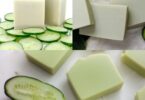Seed oil: how is it produced
How is seed oil obtained? If extra virgin olive oil is produced, by law, by cold pressing, the extraction and production of seed oil can take place in two different ways: by “mechanical pressure” or with the help of chemical solvents. Cold mechanical extraction by pressure allows the nutritional properties of the seeds to be maintained unaltered, which are first pressed and then rectified: with this method you obtain a type of oil with a more pleasant flavor and certainly more suitable for cooking. Faster and cheaper, the extraction method through chemical solvents undoubtedly allows a greater yield but it is the flavor and quality of the final product that suffers.
All about cream: how it’s made, types and uses in the kitchen

We talk about seed oil but it would be more correct to talk about “oils”: there are in fact many varieties of this product. The differences between the main types obviously depend on the seed used. Among the best known and most used varieties of seed oil we find:
Sunflower seed oil: straw yellow in color, it is produced by processing the seeds of the flower; it contains polyunsaturated and monounsaturated fatty acids, in particular oleic acid, important for heart health. Suitable for frying vegetables because it is particularly resistant and stable at medium high temperatures (120 -150 °C), although the best option remains peanut seed oil.
Flaxseed oil: an excellent source of omega-3, flaxseed oil is consumed fresh and raw, excellent for seasoning salads and vegetable dishes. Be careful with storage: it should be kept in the refrigerator to prevent it from becoming rancid.
Peanut oil: produced from the fattiest part of the seeds, peanut oil has a sweet and pleasant flavor and is the most suitable for frying.
Corn oil: not really a seed oil but rather a “grain” oil, corn oil is rich in vitamins, beta-carotene and substances beneficial for the heart. Recommended uses: raw to season salads and cold dishes, cooked for pan-fried dishes that do not require excessive temperatures.
Pumpkin seed oil: has an intense and strong flavor that makes it pleasant even raw, pumpkin seed oil is rich in mineral salts, fatty acids and vitamins.
Soybean oil: light yellow in color and with a delicate flavor, soybean oil is the most used variety in the world. Rich in omega-3 fatty acids, it also stays good as a raw condiment.
Palm seed oil: also called palm oil, it is produced from the internal kernel of the palm fruit. Unlike other seed oils, it has a higher concentration of saturated fats. Not to be confused with palm oil obtained by processing the pulp.
And the oil of various seeds? This wording, which must appear by law on the packaging, corresponds to a mixture of oils of different seeds. Particularly cheap, the oil of various seeds is also the least suitable for food purposes precisely because it is not possible to establish with certainty the oils of which it is composed.
How to choose seed oil
How to choose a good seed oil, what does it contain and how to store it properly? Seed oil is rich in omega-3 and omega-6 polyunsaturated fats, it is a good source of vitamins, especially peanut oil which, rich in vitamin E, is an excellent ally of the cardiovascular system; corn oil is useful for reducing bad cholesterol levels in the blood while sunflower oil helps lower triglyceride levels.

How to store it: does seed oil expire?
Depending on the type of seed, oils are also distinguished by their greater or lesser tendency to go rancid: transparent bottles contribute to the process because they do not shield the oxidizing action of light. For these reasons, it is advisable to transfer the seed oil into dark bottles, always carefully close the cap and store them in places away from sources of light and heat. Despite their initial good nutritional properties, it is important to remember that seed oils, through the refining process, lose a good part of their nutrients, so it is preferable to choose varieties of oil obtained with mechanical extraction, “first pressing” and better if cold-extracted.
Continue Reading in next page
ADVERTISEMENT






